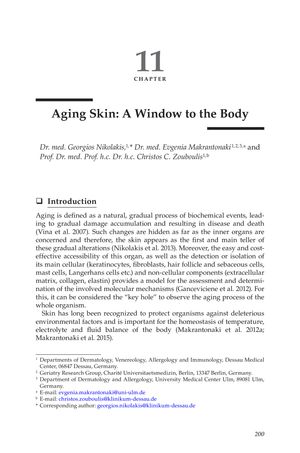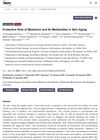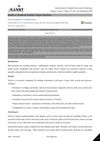Aging Skin: A Window to the Body
April 2016
in “
CRC Press eBooks
”
skin aging genetics hormonal changes UV radiation pollution cellular senescence immunological changes epidermal barrier disruption hair follicles androgenetic alopecia glycosaminoglycans extracellular matrix DNA damage stem cell aging extrinsic factors skin manifestations age-associated skin diseases genetic factors hormone changes sun exposure environmental pollution cell aging immune system changes skin barrier disruption hair loss male pattern baldness GAGs ECM external factors skin symptoms age-related skin conditions

TLDR Skin aging reflects overall body aging and can indicate internal health conditions.
The 2016 document examines the complex relationship between skin aging and overall body aging, detailing both intrinsic factors like genetics and hormonal changes, and extrinsic factors such as UV radiation and pollution. It highlights the molecular mechanisms involved in skin aging, including cellular senescence, immunological changes, and epidermal barrier disruption. The document also discusses the impact of aging on hair follicles, particularly in androgenetic alopecia, and the changes in skin components like glycosaminoglycans and the extracellular matrix. It explores the role of DNA damage in stem cell aging and the effects of extrinsic factors on skin manifestations and age-associated skin diseases. Furthermore, the paper connects skin aging with systemic diseases, suggesting that skin can serve as a model for predicting internal age-related conditions and could help in guiding treatment for diseases like cancer and diabetes. The document does not mention the number of people involved in the research, as it appears to be a review rather than a clinical study.



